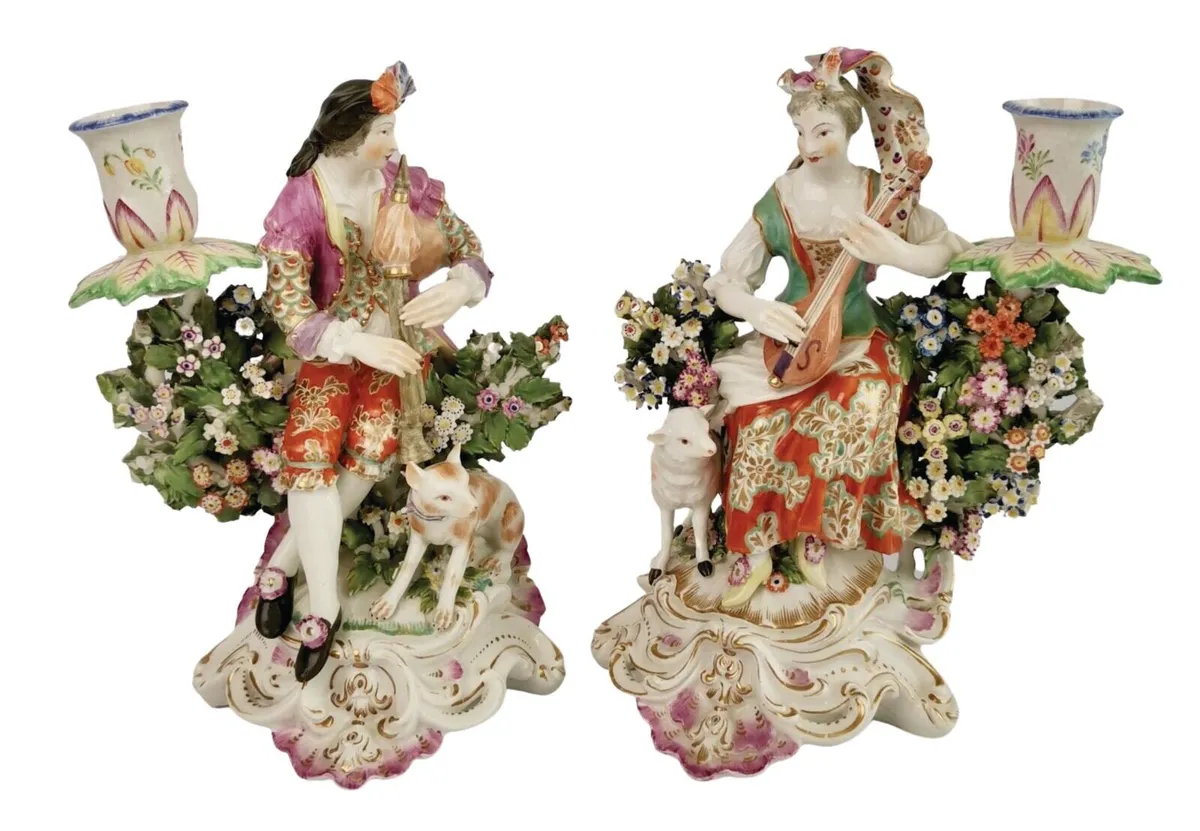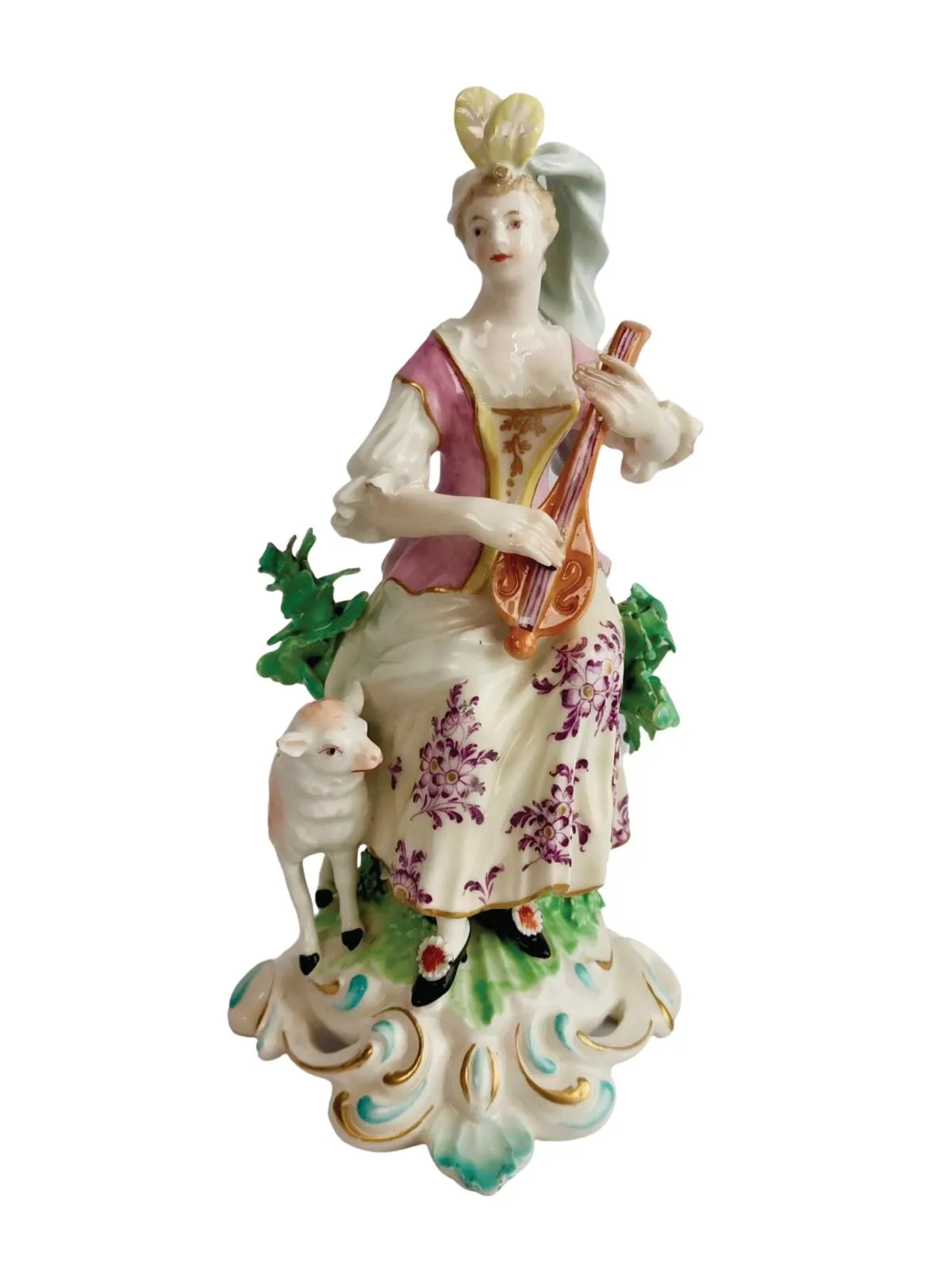In Britain, porcelain figures were mostly made at Chelsea, Bow and Derby, often inspired by those made by Meissen in Germany. But these figures didn’t just stand in glass cabinets or on mantelpieces the way you might see them today; they were brought out at dinnertime to enliven the table and to impress and entertain the guests.
By late medieval times, it was already customary to bring out figures made of wax and sugar to decorate the dining table. But there were problems with these creations: sugar dissolves and wax melts, so these fragile figures would often only last one evening.
Once porcelain became available, it quickly replaced the use of wax and sugar, allowing the production of figures that could be used again and again. At fashionable 18th-century dinner parties, the dessert, which was served last, was the course that would leave a lasting impression of the evening and special dessert services became popular.

Usually more elaborate than the dinner service, they were accompanied by spectacular table decorations. In fact, creating breathtaking dessert tables became a specialist trade. Chapters were dedicated to them in culinary books of the period and table-top gardens complete with pyramids, fountains and farms sprang to life in aristocratic dining rooms.
Horace Walpole wrote jokingly in 1750 that ‘all the geniuses of the age are employed in designing new plans for dessert’. When the Duke and Duchess of Norfolk put on a large dinner in 1756, a guest wrote home: ‘After a very Elligant Dinner of a great many dishes...The Table was Prepar’d for Dessert which was a Beautiful Park, round the Edge was a Plantation of Flowering Shrubs, and in the middle a Fine piece of water with Dolphins Spouting out water, and Deer dispersed Irregularly over the Lawn… it was such a Piece of work it was all left on the Table till we went to Coffee.’
Not surprisingly, human and animal figures played a central role in these landscapes. And to keep guests entertained, allegory – a written or pictorial representation of abstract concepts – became the popular pastime; a sign of aristocratic sophistication was one’s ability to read notions such as the seasons, the senses, the arts, or Greek and Roman mythology.
Of all the themes – from gods and goddesses to tradesmen and women – shepherds and shepherdesses must have been the most in-demand as a huge number of them survive, and remain popular collectors’ items. ‘When the dessert was brought in, I thought it the most wonderful thing I ever beheld. I fancy’d myself either in a garden or at an opera,’ wrote British Ambassador Sir Charles Hanbury Williams in 1748, when he attended a dinner given by Count von Brühl, director of the Meissen factory.

No one could have known this better than Sir Charles himself, as just three years earlier Augustus III of Poland had sent him a large Meissen dinner service as a diplomatic gift that included no less than 166 porcelain figures, including 54 pastoral figures and 34 hunt figures. There is another context for this: the 18th century brought the beginning of Romanticism. Aristocrats were bound by strict conventions and protocols, so wouldn’t you sometimes want to escape to a pastoral idyll where rustic folk live a simple life?
Marie Antoinette had her model farm, Hameau de la Reine, at Versailles, where she met friends in an intimate environment, free from the strict protocol of the court. In the Arcadian dream, aristocratic people would role-play a unity and intimacy that was not normally available to them, and these beautifully laid-out dessert tables with their porcelain figures would have been a wonderful way to pretend simplicity in the midst of vast abundance.
As this type of lavish entertainment fell out of fashion, the porcelain figures were banished to cabinets or attics. Auction houses still sell a large number of them, often neglected, damaged and smoky – but with careful restoration they can be brought back to their original glory. And if you ever dismissed them as kitsch, look a bit closer… their innocent faces, tender eyes and graceful postures contain the Arcadian dream that is alive in all of us.
You may also like:
